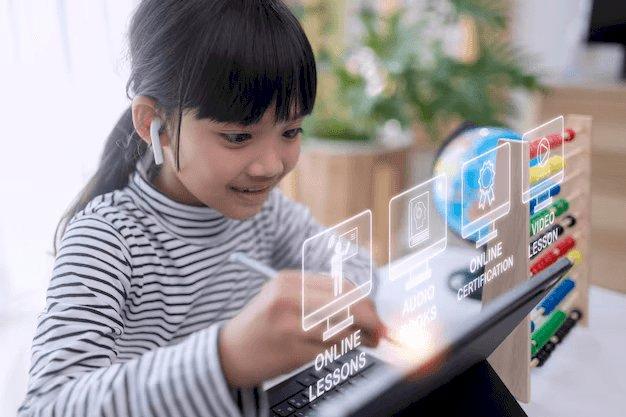The Evolution of EdTech: How Technology Is Transforming Education
Discover the evolution of EdTech and its transformative impact on education. Explore the history, milestones, and future possibilities of educational technology.

Introduction
In the digital age, technology has become an integral part of our lives, and education is no exception. The evolution of Educational Technology (EdTech) has revolutionized the way we teach and learn, opening up new possibilities and opportunities for students and educators alike. In this blog, we will explore the journey of EdTech, its impact on education, and how it continues to shape the future of learning.
The Early Days of EdTech
EdTech has a long history, dating back to the invention of the chalkboard and the printing press. These innovations marked the beginning of a more accessible and standardized form of education. Over the centuries, technology continued to play a role in education, with the advent of educational radio broadcasts and educational films.
The Digital Revolution
The real turning point in EdTech came with the digital revolution. The introduction of personal computers in the 1980s brought the power of computation and information access to classrooms. This period saw the rise of educational software, such as "Oregon Trail" and "Math Blaster," which engaged students in interactive learning experiences.
The Internet and Online Learning
The proliferation of the internet in the late 20th century transformed education yet again. The world wide web made it possible for students to access vast amounts of information and connect with educators and peers worldwide. Online courses and e-learning platforms emerged, making education more flexible and accessible.
The Rise of Learning Management Systems (LMS)
Learning Management Systems like Moodle, Blackboard, and Canvas became popular in educational institutions. These platforms streamlined course management, allowing educators to organize content, assignments, and assessments online. Students could access course materials, submit assignments, and participate in discussions from anywhere with an internet connection.
Interactive and Multimedia Learning
The evolution of EdTech introduced interactive and multimedia learning experiences. Educational software and websites incorporated animations, videos, simulations, and gamification to engage students in a more immersive way. This approach catered to various learning styles and made education more engaging.
Mobile Learning and Apps
The advent of smartphones and tablets brought learning to the palm of students' hands. Educational apps and mobile learning platforms provided convenient access to educational content on a wide range of subjects. These apps often featured interactive quizzes, flashcards, and adaptive learning experiences.
The Impact of Artificial Intelligence (AI)
Artificial Intelligence has revolutionized EdTech in recent years. AI-powered tools can personalize learning experiences, adapting content and pace to individual student needs. Chatbots provide instant assistance, and AI-driven analytics offer insights into student performance, helping educators make data-informed decisions.
Virtual Reality (VR) and Augmented Reality (AR)
Virtual Reality and Augmented Reality are transforming education by creating immersive learning environments. VR can transport students to historical events or remote locations, while AR enhances classroom experiences by overlaying digital information on the physical world. These technologies make learning more interactive and memorable.
The Future of EdTech
The future of EdTech promises even more exciting developments:
-
Personalized Learning: AI will continue to play a significant role in tailoring education to individual student needs, providing custom learning paths and instant feedback.
-
Data-Driven Education: Analytics will become more sophisticated, allowing educators to track student progress and identify areas for improvement in real-time.
-
Global Collaboration: EdTech will facilitate global collaboration, enabling students and educators from different parts of the world to work together on projects and share insights.
-
Accessibility: EdTech will continue to break down barriers to education, ensuring that learners of all abilities and backgrounds have access to high-quality resources.
-
Blended Learning: Blended learning models that combine online and in-person instruction will become more prevalent, offering the benefits of both worlds.
Conclusion
The evolution of EdTech has transformed education from a traditional, classroom-based model to a dynamic, flexible, and personalized experience. The integration of technology has enriched learning by providing access to vast resources, fostering interactive and multimedia experiences, and enhancing collaboration among students and educators worldwide.
As we look to the future, the possibilities for EdTech are boundless. With AI, VR, and AR on the horizon, we can expect even more exciting innovations that will continue to shape the landscape of education. EdTech has proven to be a powerful force in education, and its impact will only grow as it evolves to meet the needs of learners in the digital age.

 bloggeramar
bloggeramar 
































